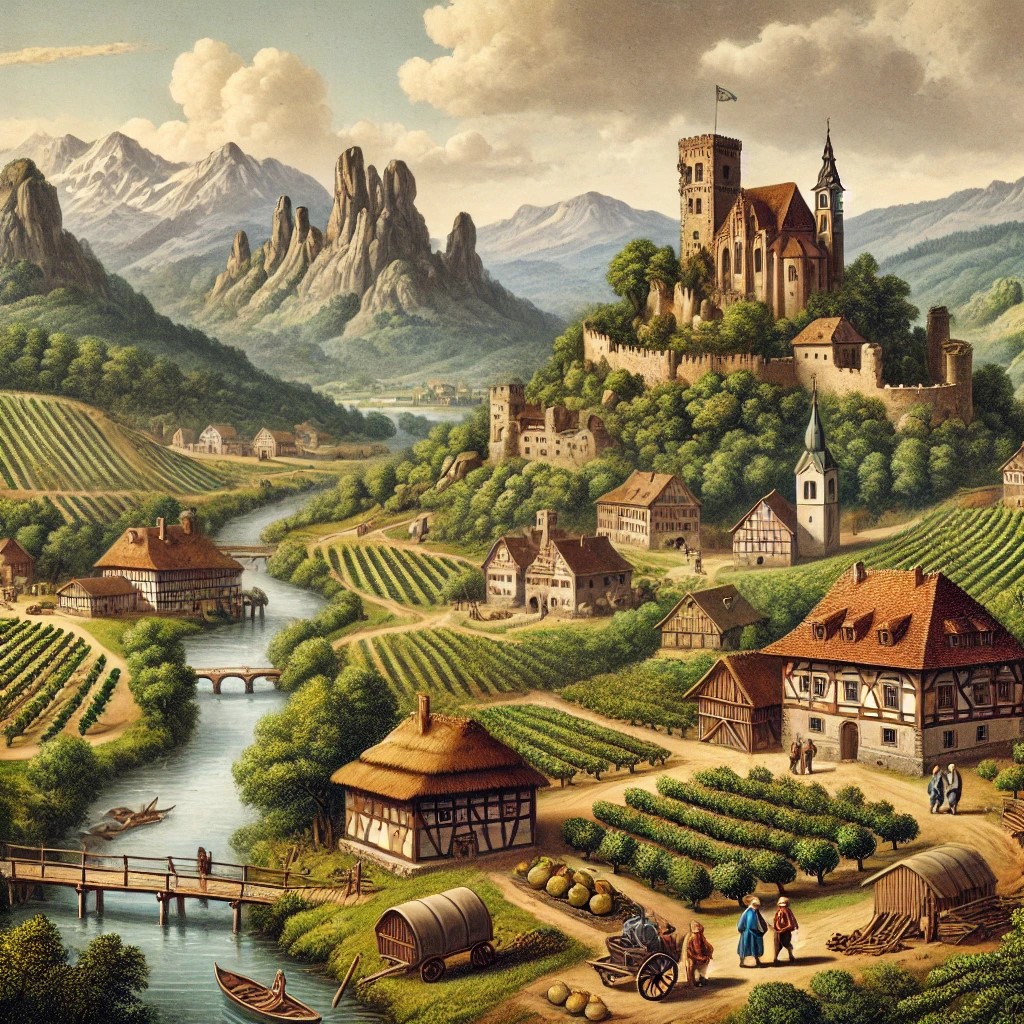Aarau
Aarau is a town in the Principality of Berne, situated on the Aar River, in the Aar Valley at the foot of the Jura Mountains, 41 miles northeast of Berne. It serves as an important regional hub, with a history shaped by both Swiss and German influences. The town's architecture reflects its medieval past, with well-preserved half-timbered houses, narrow alleys and stone fortifications. The Rathaus, an ancient tower, stands as a remnant of Aarau's municipal heritage, alongside other quaint buildings that lend the town a picturesque character. A notable feature of Aarau is its large cantonal library, which houses an extensive collection of rare manuscripts and incunabula, making it a center for scholarly activity. The presence of this library has attracted scribes, clerics and learned men, making Aarau a place of study and quiet contemplation.
Contents
The economy of Aarau is diverse, with its industries including the production of iron, salt, cotton and silk cloth, cement, bells, precision tools and knives. Iron and salt deposits in the surrounding regions support metalworking and craft industries, particularly in forging weapons, tools and church bells. The textile industry benefits from trade routes passing through the Aar Valley, connecting Aarau with Swiss and German markets. Precision toolmaking, an emerging craft, has led to the presence of skilled artisans specialising in measurement instruments, mechanical devices and fine blade-making. Aarau's population in 1650 stands at approximately 1,353, with a mix of tradespeople, farmers and craftsmen contributing to the town's prosperity.
Barony
The surrounding Barony of Aargau extends from the core of the Aar Valley to the north across the Jura Mountains, reaching the Rhine River, and to the south over the adjacent Swiss Plateau. Covering an area of 542 square miles, Aargau's population is concentrated in the fertile Aar Valley and its side branches, as well as along the Rhine. Agriculture dominates the region, with fruit-growing being the primary occupation. Orchards of apples, pears and cherries provide both fresh produce and raw materials for cider and brandy production.
Historically, Aargau was a contested territory, with the Habsburgs establishing their influence over the region before it was seized by Berne in 1415. The ruins of Habsburg Castle, once the seat of the dynasty that would come to dominate the Holy Roman Empire, stand as a reminder of the Barony's storied past. Originally built around 1020, the castle served as the ancestral seat of the Habsburg family before being sacked and destroyed during the Thirty Years' War. The nearby town of Habsburg, which had once held municipal rights granted by Rudolph of Habsburg, was abandoned following the castle's destruction, and as of 1650, it has not been rebuilt. The ruins remain a place of local interest, drawing occasional visitors, treasure seekers and historians.
The Barony of Aargau maintains a close relationship with Berne, supplying agricultural goods and benefiting from Berne's military protection. Due to its position along the Rhine and its trade connections with the rest of Switzerland and Germany, Aargau sees occasional travelers, merchants and minor nobles passing through, adding to the region's cultural exchange. In times of war, the Jura Mountains provide a natural defensive barrier, and the towns along the Aar River serve as strategic locations for mustering troops or securing supply lines.
Aarau and Aargau together represent a mix of economic activity, historical legacy and strategic importance within the Swiss Confederation. While relatively small in population, the region plays a significant role in trade, scholarship and regional politics.
